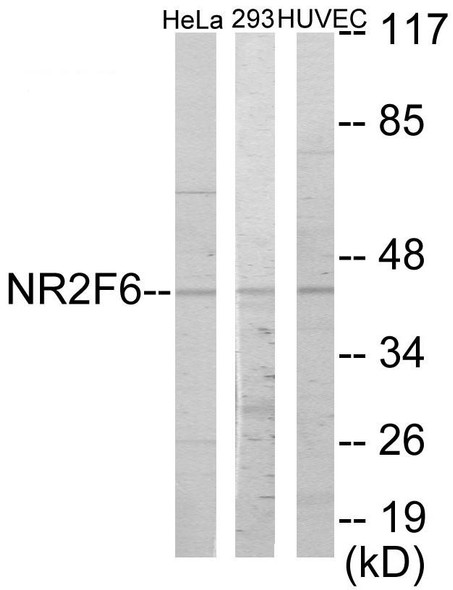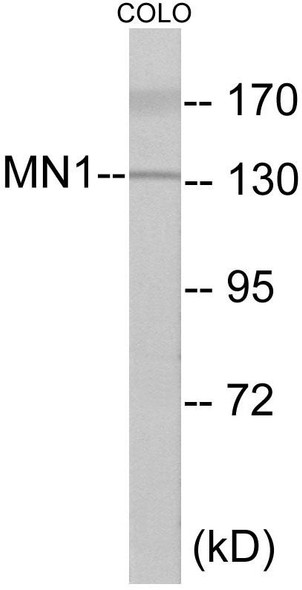CALR Colorimetric Cell-Based ELISA (CBCAB00092)
- SKU:
- CBCAB00092
- Product Type:
- ELISA Kit
- ELISA Type:
- Cell Based
- Reactivity:
- Human
- Mouse
- Rat
- Detection Method:
- Colorimetric
Description
CALR Colorimetric Cell-Based ELISA
The CALR (Calreticulin) Colorimetric Cell-Based ELISA Kit is a powerful tool for the quantitative detection of CALR levels in cell lysates and tissue extracts. This kit provides high sensitivity and specificity, allowing for precise and accurate measurements of CALR expression in various biological samples. Calreticulin is a multifunctional protein involved in calcium binding, chaperone activity, and immune response modulation. Dysregulation of CALR expression has been implicated in various diseases, including cancer, autoimmune disorders, and cardiovascular conditions.
Therefore, this ELISA kit is essential for researchers studying the role of CALR in disease pathogenesis and for developing targeted therapeutic interventions. With easy-to-follow protocols and reliable performance, the CALR Colorimetric Cell-Based ELISA Kit is an indispensable tool for investigating the function and regulation of CALR in biological processes and disease states. Order yours today and unlock new insights into the role of calreticulin in health and disease.
| Product Name: | CALR Colorimetric Cell-Based ELISA |
| Product Code: | CBCAB00092 |
| ELISA Type: | Cell-Based |
| Target: | CALR |
| Reactivity: | Human, Mouse, Rat |
| Dynamic Range: | > 5000 Cells |
| Detection Method: | Colorimetric 450 nmStorage/Stability:4°C/6 Months |
| Format: | 96-Well Microplate |
The CALR Colorimetric Cell-Based ELISA Kit is a convenient, lysate-free, high throughput and sensitive assay kit that can detect CALR protein expression profile in cells. The kit can be used for measuring the relative amounts of CALR in cultured cells as well as screening for the effects that various treatments, inhibitors (ie siRNA or chemicals), or activators have on CALR.
Qualitative determination of CALR concentration is achieved by an indirect ELISA format. In essence, CALR is captured by CALR-specific primary antibodies while the HRP-conjugated secondary antibodies bind the Fc region of the primary antibody. Through this binding, the HRP enzyme conjugated to the secondary antibody can catalyze a colorimetric reaction upon substrate addition. Due to the qualitative nature of the Cell-Based ELISA, multiple normalization methods are needed:
| 1. | A monoclonal antibody specific for human GAPDH is included to serve as an internal positive control in normalizing the target absorbance values. |
| 2. | Following the colorimetric measurement of HRP activity via substrate addition, the Crystal Violet whole-cell staining method may be used to determine cell density. After staining, the results can be analysed by normalizing the absorbance values to cell amounts, by which the plating difference can be adjusted. |
| Database Information: | Gene ID: 811, UniProt ID: P27797, OMIM: 109091, Unigene: Hs.515162 |
| Gene Symbol: | CALR |
| Sub Type: | None |
| UniProt Protein Function: | Calreticulin: Calcium-binding chaperone that promotes folding, oligomeric assembly and quality control in the endoplasmic reticulum (ER) via the calreticulin/calnexin cycle. This lectin interacts transiently with almost all of the monoglucosylated glycoproteins that are synthesized in the ER. Interacts with the DNA-binding domain of NR3C1 and mediates its nuclear export. Involved in maternal gene expression regulation. May participate in oocyte maturation via the regulation of calcium homeostasis. Monomer. Component of an EIF2 complex at least composed of CELF1/CUGBP1, CALR, CALR3, EIF2S1, EIF2S2, HSP90B1 and HSPA5. Interacts with PDIA3/ERp57. Interacts with NR3C1 and TRIM21. Interacts with GABARAP. Belongs to the calreticulin family. |
| UniProt Protein Details: | Protein type:Calcium-binding; Motility/polarity/chemotaxis; Nuclear receptor co-regulator; Secreted; Secreted, signal peptide Chromosomal Location of Human Ortholog: 19p13.13 Cellular Component: cell surface; cytoplasm; cytosol; endoplasmic reticulum; endoplasmic reticulum lumen; extracellular region; extracellular space; focal adhesion; intracellular; membrane; nucleus; perinuclear region of cytoplasm; polysome Molecular Function:androgen receptor binding; calcium ion binding; carbohydrate binding; chaperone binding; complement component C1q binding; glycoprotein binding; integrin binding; mRNA binding; protein binding; ubiquitin protein ligase binding; unfolded protein binding; zinc ion binding Biological Process: antigen processing and presentation of peptide antigen via MHC class I; cellular calcium ion homeostasis; glucocorticoid receptor signaling pathway; negative regulation of neuron differentiation; negative regulation of retinoic acid receptor signaling pathway; negative regulation of steroid hormone receptor signaling pathway; negative regulation of transcription from RNA polymerase II promoter; negative regulation of transcription, DNA-dependent; negative regulation of translation; peptide antigen assembly with MHC class I protein complex; positive regulation of cell cycle; positive regulation of cell proliferation; positive regulation of DNA replication; positive regulation of phagocytosis; protein export from nucleus; protein folding; protein maturation via protein folding; protein stabilization; receptor-mediated endocytosis; regulation of apoptosis; regulation of transcription, DNA-dependent; sequestering of calcium ion Disease: Myelofibrosis; Thrombocythemia 1 |
| NCBI Summary: | Calreticulin is a multifunctional protein that acts as a major Ca(2+)-binding (storage) protein in the lumen of the endoplasmic reticulum. It is also found in the nucleus, suggesting that it may have a role in transcription regulation. Calreticulin binds to the synthetic peptide KLGFFKR, which is almost identical to an amino acid sequence in the DNA-binding domain of the superfamily of nuclear receptors. Calreticulin binds to antibodies in certain sera of systemic lupus and Sjogren patients which contain anti-Ro/SSA antibodies, it is highly conserved among species, and it is located in the endoplasmic and sarcoplasmic reticulum where it may bind calcium. The amino terminus of calreticulin interacts with the DNA-binding domain of the glucocorticoid receptor and prevents the receptor from binding to its specific glucocorticoid response element. Calreticulin can inhibit the binding of androgen receptor to its hormone-responsive DNA element and can inhibit androgen receptor and retinoic acid receptor transcriptional activities in vivo, as well as retinoic acid-induced neuronal differentiation. Thus, calreticulin can act as an important modulator of the regulation of gene transcription by nuclear hormone receptors. Systemic lupus erythematosus is associated with increased autoantibody titers against calreticulin but calreticulin is not a Ro/SS-A antigen. Earlier papers referred to calreticulin as an Ro/SS-A antigen but this was later disproven. Increased autoantibody titer against human calreticulin is found in infants with complete congenital heart block of both the IgG and IgM classes. [provided by RefSeq, Jul 2008] |
| UniProt Code: | P27797 |
| NCBI GenInfo Identifier: | 117501 |
| NCBI Gene ID: | 811 |
| NCBI Accession: | P27797.1 |
| UniProt Secondary Accession: | P27797,Q6IAT4, Q9UDG2, |
| UniProt Related Accession: | P27797 |
| Molecular Weight: | 48,142 Da |
| NCBI Full Name: | Calreticulin |
| NCBI Synonym Full Names: | calreticulin |
| NCBI Official Symbol: | CALR |
| NCBI Official Synonym Symbols: | RO; CRT; SSA; cC1qR; HEL-S-99n |
| NCBI Protein Information: | calreticulin |
| UniProt Protein Name: | Calreticulin |
| UniProt Synonym Protein Names: | CRP55; Calregulin; Endoplasmic reticulum resident protein 60; ERp60; HACBP; grp60 |
| Protein Family: | Calreticulin |
| UniProt Gene Name: | CALR |
| Component | Quantity |
| 96-Well Cell Culture Clear-Bottom Microplate | 2 plates |
| 10X TBS | 24 mL |
| Quenching Buffer | 24 mL |
| Blocking Buffer | 50 mL |
| 15X Wash Buffer | 50 mL |
| Primary Antibody Diluent | 12 mL |
| 100x Anti-Phospho Target Antibody | 60 µL |
| 100x Anti-Target Antibody | 60 µL |
| Anti-GAPDH Antibody | 60 µL |
| HRP-Conjugated Anti-Rabbit IgG Antibody | 12 mL |
| HRP-Conjugated Anti-Mouse IgG Antibody | 12 mL |
| SDS Solution | 12 mL |
| Stop Solution | 24 mL |
| Ready-to-Use Substrate | 12 mL |
| Crystal Violet Solution | 12 mL |
| Adhesive Plate Seals | 2 seals |
The following materials and/or equipment are NOT provided in this kit but are necessary to successfully conduct the experiment:
- Microplate reader able to measure absorbance at 450 nm and/or 595 nm for Crystal Violet Cell Staining (Optional)
- Micropipettes with capability of measuring volumes ranging from 1 µL to 1 ml
- 37% formaldehyde (Sigma Cat# F-8775) or formaldehyde from other sources
- Squirt bottle, manifold dispenser, multichannel pipette reservoir or automated microplate washer
- Graph paper or computer software capable of generating or displaying logarithmic functions
- Absorbent papers or vacuum aspirator
- Test tubes or microfuge tubes capable of storing ≥1 ml
- Poly-L-Lysine (Sigma Cat# P4832 for suspension cells)
- Orbital shaker (optional)
- Deionized or sterile water
*Note: Protocols are specific to each batch/lot. For the correct instructions please follow the protocol included in your kit.
| Step | Procedure |
| 1. | Seed 200 µL of 20,000 adherent cells in culture medium in each well of a 96-well plate. The plates included in the kit are sterile and treated for cell culture. For suspension cells and loosely attached cells, coat the plates with 100 µL of 10 µg/ml Poly-L-Lysine (not included) to each well of a 96-well plate for 30 minutes at 37°C prior to adding cells. |
| 2. | Incubate the cells for overnight at 37°C, 5% CO2. |
| 3. | Treat the cells as desired. |
| 4. | Remove the cell culture medium and rinse with 200 µL of 1x TBS, twice. |
| 5. | Fix the cells by incubating with 100 µL of Fixing Solution for 20 minutes at room temperature. The 4% formaldehyde is used for adherent cells and 8% formaldehyde is used for suspension cells and loosely attached cells. |
| 6. | Remove the Fixing Solution and wash the plate 3 times with 200 µL 1x Wash Buffer for five minutes each time with gentle shaking on the orbital shaker. The plate can be stored at 4°C for a week. |
| 7. | Add 100 µL of Quenching Buffer and incubate for 20 minutes at room temperature. |
| 8. | Wash the plate 3 times with 1x Wash Buffer for 5 minutes each time. |
| 9. | Add 200 µL of Blocking Buffer and incubate for 1 hour at room temperature. |
| 10. | Wash 3 times with 200 µL of 1x Wash Buffer for 5 minutes each time. |
| 11. | Add 50 µL of 1x primary antibodies (Anti-CALR Antibody and/or Anti-GAPDH Antibody) to the corresponding wells, cover with Parafilm and incubate for 16 hours (overnight) at 4°C. If the target expression is known to be high, incubate for 2 hours at room temperature. |
| 12. | Wash 3 times with 200 µL of 1x Wash Buffer for 5 minutes each time. |
| 13. | Add 50 µL of 1x secondary antibodies (HRP-Conjugated AntiRabbit IgG Antibody or HRP-Conjugated Anti-Mouse IgG Antibody) to corresponding wells and incubate for 1.5 hours at room temperature. |
| 14. | Wash 3 times with 200 µL of 1x Wash Buffer for 5 minutes each time. |
| 15. | Add 50 µL of Ready-to-Use Substrate to each well and incubate for 30 minutes at room temperature in the dark. |
| 16. | Add 50 µL of Stop Solution to each well and read OD at 450 nm immediately using the microplate reader. |
(Additional Crystal Violet staining may be performed if desired – details of this may be found in the kit technical manual.)






